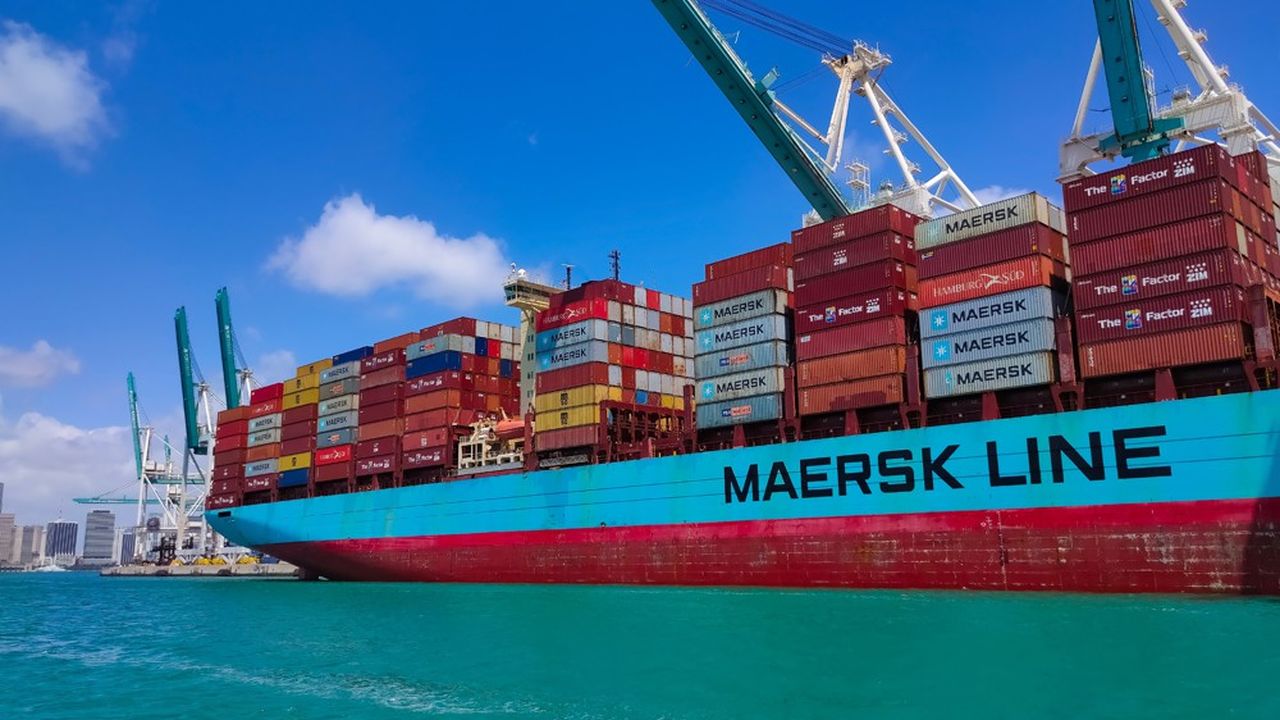[vc_row njt-role=”people-in-the-roles” njt-role-user-roles=”administrator,editor,author,armember”][vc_column][vc_column_text]
While the French luxury goods industry is showing good export results in 2022, France has a record foreign trade deficit. The government is counting on the reindustrialization plan -France 2030- and on the dissemination of the export culture, to redress the situation in the future.
The results of French economic showcases are often used to illustrate France’s economic influence. In early February, the French Minister of the Economy, Bruno Le Maire, congratulated the CAC 40 companies on their success. But the performance of the giants overshadows the foreign trade deficit, one of the key markers of the country’s competitiveness.
Certain sectors, starting with the luxury goods industry, have seen their French flagships continue to grow in power and shine on the international stage.
But this has not prevented the disappearance of several industrial sectors. The consequences are direct: less activity and an economic stall of France leading to an increased dependence on imports.
Record trade deficit
In 2022, the trade deficit in goods broke an all-time record. For the first time, it exceeded 160 billion euros, or precisely 163.8 billion euros ! According to INSEE figures, France has had a chronic deficit in its trade in goods with the rest of the world for exactly 20 years, with the last trade surplus dating back to 2002. The 2022 economic reports, however, point to a record surplus of 50 billion euros if we add up certain virtuous sectors, including the luxury industry. The perfume and cosmetics industry alone recorded a surplus of 15 billion euros, beverages, 16 billion euros and aeronautics, 23.5 billion euros.
However, according to INSEE, industrial production was more resilient than expected at the end of last year and could increase slightly in the first half of 2023. The purchasing managers’ index, a composite indicator of a country’s manufacturing activity, has indeed risen this month to 51.6, after 49.1 in January.
Bad policy choices
There are many reasons for this trade deficit. Starting with the increase in oil, gas and raw material imports (+29%), but also the depreciation of the euro against the dollar, by about 11%. The soaring energy bill, which rose in one year from 45 billion to 115 billion euros, increased the external deficit by 86%. Another reason for this underperformance is the collapse of the French manufacturing industry, which has fallen to 9% of GDP in 2021 from 18% in 2000.
But it is above all a succession of bad strategic choices that is responsible for the worsening deficit. French companies are experiencing an environment that is pushing them to relocate their production abroad. “It is unacceptable to see this deficit increase in such proportions over the last two years, while international trade has rebounded strongly,” said Marc Touati, director of ACDEFI.
Spreading the export culture
France wants to raise the bar after such a fiasco. The Minister of Foreign Trade, Olivier Becht, considers that focusing on exports is now essential. “If we don’t internationalize our companies, they will be in danger”, he said, “this export culture must be spread”.
After pointing out the weakness of French SMEs in exports, the Minister announced that he was counting on the France 2030 plan to accelerate “a reindustrialization that has been underway for five years”. Presented in October 2021, this plan with 54 billion euros is supposed to allow France to catch up with its industrial lag, by investing in innovative technologies or supporting the energy transition.
With such results, it is difficult to predict the future of French foreign trade. A small ray of hope in the landscape, Olivier Becht welcomed the increase in the number of French companies exporting, from 130,000 to 144,000.
Read also >CAC 40 companies’ profits to be driven by luxury goods and energy in 2022
Featured photo : © Shutterstock[/vc_column_text][/vc_column][/vc_row][vc_row njt-role=”not-logged-in”][vc_column][vc_column_text]
While the French luxury goods industry is showing good export results in 2022, France has a record foreign trade deficit. The government is counting on the reindustrialization plan -France 2030- and on the dissemination of the export culture, to redress the situation in the future.
The results of French economic showcases are often used to illustrate France’s economic influence. In early February, the French Minister of the Economy, Bruno Le Maire, congratulated the CAC 40 companies on their success. But the performance of the giants overshadows the foreign trade deficit, one of the key markers of the country’s competitiveness.
Certain sectors, starting with the luxury goods industry, have seen their French flagships continue to grow in power and shine on the international stage.
But this has not prevented the disappearance of several industrial sectors. The consequences are direct: less activity and an economic stall of France leading to an increased dependence on imports.
Record trade deficit
In 2022, the trade deficit in goods broke an all-time record. For the first time, it exceeded 160 billion euros, or precisely 163.8 billion euros ! According to INSEE figures, France has had a chronic deficit in its trade in goods with the rest of the world for exactly 20 years, with the last trade surplus dating back to 2002. The 2022 economic reports, however, point to a record surplus of 50 billion euros if we add up certain virtuous sectors, including the luxury industry. The perfume and cosmetics industry alone recorded a surplus of 15 billion euros, beverages, 16 billion euros and aeronautics, 23.5 billion euros.
[…][/vc_column_text][vc_cta h2=”This article is reserved for subscribers.” h2_font_container=”tag:h2|font_size:16|text_align:left” h2_use_theme_fonts=”yes” h4=”Subscribe now !” h4_font_container=”tag:h2|font_size:32|text_align:left|line_height:bas” h4_use_theme_fonts=”yes” txt_align=”center” color=”black” add_button=”right” btn_title=”I SUBSCRIBE !” btn_color=”danger” btn_size=”lg” btn_align=”center” use_custom_fonts_h2=”true” use_custom_fonts_h4=”true” btn_button_block=”true” btn_custom_onclick=”true” btn_link=”url:https%3A%2F%2Ftest2023.luxus-plus.com%2Fen%2Fsubscriptions-and-newsletter-special-offer-valid-until-september-30-2020-2-2%2F”]Get unlimited access to all articles and live a new reading experience, preview contents, exclusive newsletters…
Already have an account ? Please log in.[/vc_cta][vc_column_text]Featured photo : © Shutterstock[/vc_column_text][/vc_column][/vc_row][vc_row njt-role=”people-in-the-roles” njt-role-user-roles=”subscriber,customer”][vc_column][vc_column_text]
While the French luxury goods industry is showing good export results in 2022, France has a record foreign trade deficit. The government is counting on the reindustrialization plan -France 2030- and on the dissemination of the export culture, to redress the situation in the future.
The results of French economic showcases are often used to illustrate France’s economic influence. In early February, the French Minister of the Economy, Bruno Le Maire, congratulated the CAC 40 companies on their success. But the performance of the giants overshadows the foreign trade deficit, one of the key markers of the country’s competitiveness.
Certain sectors, starting with the luxury goods industry, have seen their French flagships continue to grow in power and shine on the international stage.
But this has not prevented the disappearance of several industrial sectors. The consequences are direct: less activity and an economic stall of France leading to an increased dependence on imports.
Record trade deficit
In 2022, the trade deficit in goods broke an all-time record. For the first time, it exceeded 160 billion euros, or precisely 163.8 billion euros ! According to INSEE figures, France has had a chronic deficit in its trade in goods with the rest of the world for exactly 20 years, with the last trade surplus dating back to 2002. The 2022 economic reports, however, point to a record surplus of 50 billion euros if we add up certain virtuous sectors, including the luxury industry. The perfume and cosmetics industry alone recorded a surplus of 15 billion euros, beverages, 16 billion euros and aeronautics, 23.5 billion euros.
[…][/vc_column_text][vc_cta h2=”This article is reserved for subscribers.” h2_font_container=”tag:h2|font_size:16|text_align:left” h2_use_theme_fonts=”yes” h4=”Subscribe now !” h4_font_container=”tag:h2|font_size:32|text_align:left|line_height:bas” h4_use_theme_fonts=”yes” txt_align=”center” color=”black” add_button=”right” btn_title=”I SUBSCRIBE !” btn_color=”danger” btn_size=”lg” btn_align=”center” use_custom_fonts_h2=”true” use_custom_fonts_h4=”true” btn_button_block=”true” btn_custom_onclick=”true” btn_link=”url:https%3A%2F%2Ftest2023.luxus-plus.com%2Fen%2Fsubscriptions-and-newsletter-special-offer-valid-until-september-30-2020-2-2%2F”]Get unlimited access to all articles and live a new reading experience, preview contents, exclusive newsletters…
Already have an account ? Please log in.[/vc_cta][vc_column_text]Featured photo : © Shutterstock[/vc_column_text][/vc_column][/vc_row][vc_row njt-role=”people-in-the-roles” njt-role-user-roles=”subscriber,customer”][vc_column][vc_column_text]










